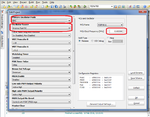K33rg4t3
Full Member level 3
Hey guys
The question is simple
Is UART working with dsPIC30F4011 but with INTERNAL OSCILLATOR?
I mean UART2_Init, UART2_Write_Text, etc.
Do I have to use external eg. 20MHz or so oscillator or will it work with internal??
Thanks in advance
The question is simple
Is UART working with dsPIC30F4011 but with INTERNAL OSCILLATOR?
I mean UART2_Init, UART2_Write_Text, etc.
Do I have to use external eg. 20MHz or so oscillator or will it work with internal??
Thanks in advance

